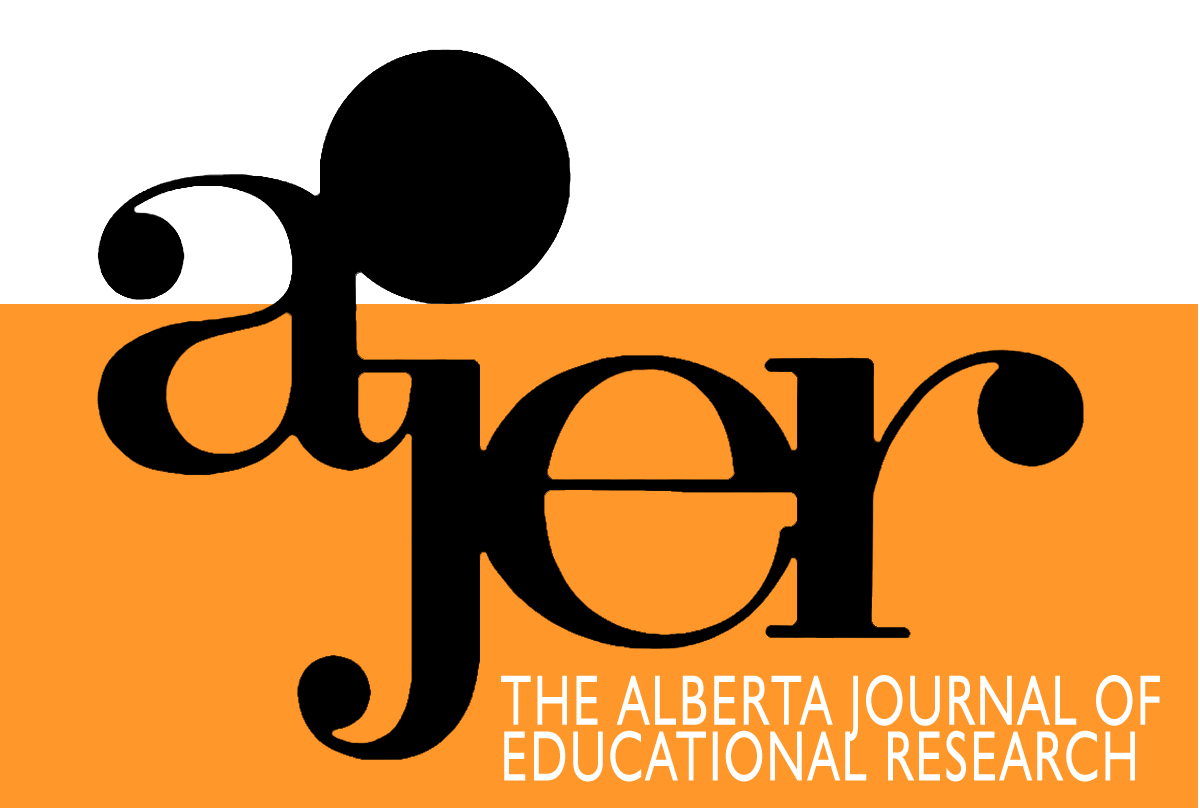From Collapse to Relationality Improv: High School Stories in Motion for Justice
DOI:
https://doi.org/10.11575/ajer.v63i1.56175Keywords:
Educational narratives, High school, social justice, marginalized youth, movement, Mots clés, jeunes marginalisés, récits basés sur les arts, narration, expériences d’étudiants, mouvement, justice sociale, école secondaire, transformation, recherche actiAbstract
Youth live storied lives (made up of intersecting stories of school, home, peers, and other aspects of lived experience). Therefore, the ways in which youth construct and tell their high school stories are vital for understanding their experiences as first authors (primary creators, constructors, and tellers of their own stories) and protagonists (as active agents of these stories). This paper examines the physical and metaphorical movements that a research team experienced when constructing and sharing their high
school narratives related to youth engagement in social justice educational change. Team members went from engaging restricted movements (which we, authors, have called collapse, truncation, or formulaic motions) to expanded motions (designated relationality improv, malleable formations, and the languages of the arts). This transformation reflected members becoming first authors of and meaningful protagonists in their high school stories of social justice and democratic educational change. For educators and researchers striving to support youth voice and engagement in educational change, an emphasis on movement (within youths’ story construction and telling processes) affords valuable openings to support youth in identifying and claiming their agency, engagement and change-making in high school.
Les jeunes vivent des vies bien remplies, composées de récits qui s’entrecroisent et qui touchent l’école, le foyer, les pairs et d’autres aspects de leur vécu. Les façons dont les jeunes construisent et racontent leurs histoires à l’école secondaire sont donc des éléments essentiels pour comprendre leurs expériences de premiers auteurs (créateurs principaux, constructeurs et raconteurs de leurs propres histoires) et de protagonistes (agents actifs de ces récits). Cet article examine les gestes physiques et métaphoriques qu’a connus une équipe de chercheurs lors de la construction et du partage de leurs récits au secondaire portant sur l’engagement des jeunes dans la justice sociale. Les membres de l’équipe ont commencé par des gestes limités (ce que nous, les auteurs, appelons effondrement, troncature ou mouvement mécanique) et ont évolué vers des gestes élargis (que l’on nomme l’improvisation de la relationnalité, les formations malléables et les langues des arts). Cette transformation reflétait l’évolution des membres pour devenir d’abord les auteurs de récits du secondaire sur la justice sociale et le changement éducationnel démocratique, et ensuite les protagonistes de ces histoires. Pour les enseignants et les chercheurs qui appuient la voix et l’engagement des jeunes dans le changement dans l’éducation, le fait de cibler le mouvement au sein de la construction et la narration des récits par les jeunes offre d’importantes possibilités pour appuyer les jeunes tant dans l’identification et la revendication de leur pouvoir et leur implication que dans les changements qu’ils effectuent à l’école secondaire.
Downloads
Published
How to Cite
Issue
Section
License
UNIVERSITY OF ALBERTA COPYRIGHT LICENSE AND PUBLICATION AGREEMENT
If accepted, authors will be asked to sign a copyright agreement with the following points:
A. Where there is any inconsistency between this Copyright License and Publication Agreement and any other document or agreement in relation to the same subject matter, the terms of this Agreement shall govern.
B. This document sets out the rights you are granting in relation to publication of your article, book review, or research note entitled (the “Article”) through inclusion in the academic journal titled Alberta Journal of Educational Research (the “Journal”) published through the Faculty of Education, representing the Governors of the University of Alberta (the “Journal Editor”).
C. There will be no payment to you for this publication and grant of rights. In consideration of the agreement to publish the Article in the Journal:
1. You are warranting that:
- the content of the Article is your original work, and its content does not contain any material infringing the copyright of others; or, where the Article is not entirely your original work, you have obtained all necessary permissions in writing to grant the rights you are giving in this agreement;
- the content of the Article does not contain any material that is defamatory of, or violates the privacy rights of, or discloses the confidential information of, any other person;
- the Article has not been published elsewhere in whole or in part, and you will not allow publication of the Article elsewhere without the consent of the Journal Editor;
- the names of all co-authors and contributors to the Article are:
2. You agree to license the copyright in the Article to the Journal Editor, on a worldwide, perpetual, royalty free basis; and to the extent required by the terms of this agreement. You shall retain the right at all times to be acknowledged as the/an author of the Article.
3. You further agree that the Journal Editor has the entitlement to deal with the Article as the Journal Editor sees fit, and including in the following manner;
- The right to print, publish, market, communicate and distribute the Article and the Journal, in this and any subsequent editions, in all media (including electronic media), in all languages, and in all territories, ing the full term of copyright, and including any form of the Article separated from the Journal, such as in a database, abstract, offprint, translation or otherwise, and to authorize third parties to do so;
- The right to register copyright of the Journal;
- The right to edit the Article, to conform to editorial policy as the Journal Editor sees fit.
4. If any co-author or contributor to the Article does not sign this agreement, the Journal Editor reserves the right to refuse to publish the Article.



